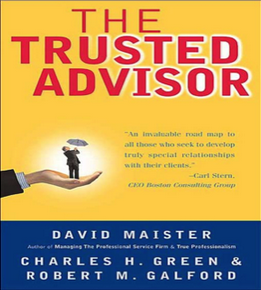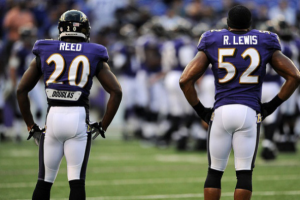How Bad Thinking Can Lead You to Discount Your Prices
I originally wrote this post way back in 2009. And even though it’s been six years – the message is just as relevant. Keeping with the theme of sales and the ever-present fear of losing a sale (thus the reaction to lower prices and the need to face the demands for price cuts), I wanted to (re)explore the subject of sales – and how bad thinking is what can lead you to discount your prices in order to close a sale. (hint: there’s more to it).
—
RainToday.com recently published its Fees and Pricing Benchmark Report: Consulting Industry 2008 in which they analyzed a ton of data from 645 consultants. There were six price-related topics, all of which are interesting. But one in particular caught my eye: the analysis on discounting.
As the authors point out, discounting is Ground Zero for hypocrisy in pricing. Everyone decries it, yet everyone, (actually, 65%), does it. It reminds me of dieting: “I know I shouldn’t, but this one little brownie won’t hurt. And I’ll get back on the wagon again tomorrow.”
Couched this way, the problem of discounting sounds like one of willpower: we all know we should stick to standards and principles, yet we are morally weak at the moment of truth.
I don’t think that discounting is a moral problem, however. Instead, it is one of bad thinking. And it centers around two false beliefs:
- The belief that certain customers are inherently “price buyers”
- The belief that feeding the price beast will make it go away.
Technically, price is a set amount of money given in exchange for various benefits. But in truth price has no inherent or default meaning. It is a proxy for several different fundamental buyer concerns that are very much tied up with the psychology of the buyer.
What Clients Mean by Price Objections
It seems obvious. A client expresses an objection to a price. They say they want a lower price. Clearly they are concerned about money, value and price. Right? So the only question is, shall we discount, and by how much. Right?
No, and no. Here are four distinct things that buyers are saying when they say they want a lower price. And not one is really about price.
- Mismatch with expectations: Only experienced buyers do a good job of guesstimating price quotes from professional services firms. They tend to focus on a basic mental model of time vs. rate, and naturally under-estimate each.
(Recall your own shock at first finding out your billing rate as a newcomer; and the shock of industry hires when they first see time estimates for what they thought was just a request for a data-dump from an expert).
Bottom Line: This “objection” isn’t an objection at all. It’s just the natural human expression of surprise and dismay when we find out our expectations didn’t match reality. Discounting just confuses them more, and rewards their delusions for the future.
- Mismatch with budget: Sometimes buyers just have a limited budget. They feel trapped, and often a little embarrassed that they have asked you to quote into a situation in which they under-budgeted or over which they have no real control. Their natural reaction is to push back, in hopes that you can solve their problem without their having to confess their embarrassing ignorance, or go back to their boss for more money.
Bottom Line: This too is best not seen as an “objection;” it is a simple constraint of the world – budget vs. cost. Again, discounting just confuses the matter, and reinforces the idea that the client can afford to not be open and transparent with you.
- Mismatch with competitors: Frequently clients faced with competitive bid situations will say, “Company X is cheaper than you by 25% – you need to discount to stay in the game.”
Let’s assume the claim is true on the face of it. There are two reasons for one firm pricing 20% below another; one is intentionally buying the business, with the intent to raise price later. The other, and most common, is that the client is comparing apples to oranges.
The solution to the first is easy: explain to the client why your competitor’s cost structure is virtually identical to yours, and why a 25% discount is inherently unsustainable, thereby showing the client is facing a relationship vs. transaction issue.
If they choose transaction, then be glad your competitor just trashed their bottom line to buy a price-shopping client. They’ll eventually be back.
The solution to the second is to have the client carefully compare, component by component, the features of your bid to the features of the competitor’s bid.
Most likely, you’ll be offering a value-added service that the competitor isn’t, and then the client can then pay the higher price for that service or have you drop it from your proposal – have the courage to give your client the data to do the comparison.
Bottom Line: Competitive mismatches aren’t really price objections; they are fundamentally rooted in a misunderstanding of either industry economics or project design economics. The answer is not discounting, but education.
- Mismatch with motivation: Professional services firms suffer disproportionately from the delusion that clients make decisions on purely rational, monetary, statistical criteria. Clients, like everyone (including ourselves) make our decisions with the heart, and justify (rationalize) them with the brain.
A basic human need is to make sure we didn’t get a “bad deal.” You can give all the “value” data you want, but unless a client feels you are being straight with them and/or they’re getting the best possible “deal,” they will remain suspicious. When suspicious, our innate tendency is to bargain, to determine some subtle psychological resistance point, just as we would at a bazaar or yard sale.
This behavior has nothing to do with price per se, and everything to do with transparency of your economics and the prices others have gotten from you.
Bottom Line: Not paying attention to motivations leads to discounting, which has the perverse effect of convincing buyers that – aha! – you really were holding out on them! Which leads them not only to haggle again the next time, but to fundamentally mistrust you because you quoted them a price that was an attempt to “get by.”
So what’s to be done? We all know the answer – don’t discount – but we think it’s a moral weakness, a failure of principles. It’s not. It’s a failure of understanding the reason for price objections.
Armed with the truth – that it’s not about price, and it never is about price – we can do the right thing: be curious, probe and sensitively get one level deeper when presented with price objections.
Back to RainToday’s research report. Why do 65% of consulting firms discount, even when, as the authors point out, the average 11% reductions could go straight to the bottom line?
It is simply fear, fear of losing the deal. Rather than asking curiously, “Please, help me know what’s behind that?” we fearfully back off in the face of the client’s aggressive tone…and start discounting.
The only reason to discount is to buy your way into a strategically new piece of business. And be careful when you do so, because only certain clients buy that way.
The most tragic result of discounting is not even the lost profit; it is that we confirm the client’s suspicion that we are untrustworthy. It leaves the client thinking, like Sir Winston Churchill’s apocryphal line, “We have now established what you are. We are merely haggling about the price.”


 A free bit of advice to anyone seeking to improve their networking skills, or looking for a true best practice in getting a meeting with someone.
A free bit of advice to anyone seeking to improve their networking skills, or looking for a true best practice in getting a meeting with someone. 
 I wrote a good blog post at this time seven years ago, and haven’t improved on it yet. Here it is again.
I wrote a good blog post at this time seven years ago, and haven’t improved on it yet. Here it is again. Ed Reed
Ed Reed